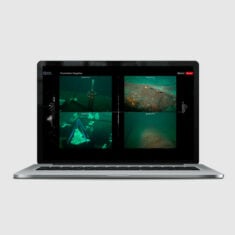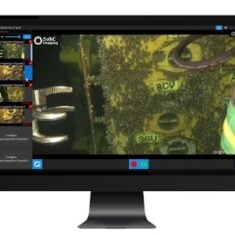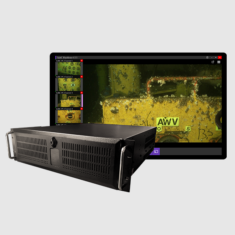UUV Communications
Underwater communications for UUV (unmanned underwater vehicles) may be provided by a number of wireless technologies, or by optical or electrical cable in the case of ROV (remotely operated vehicles).
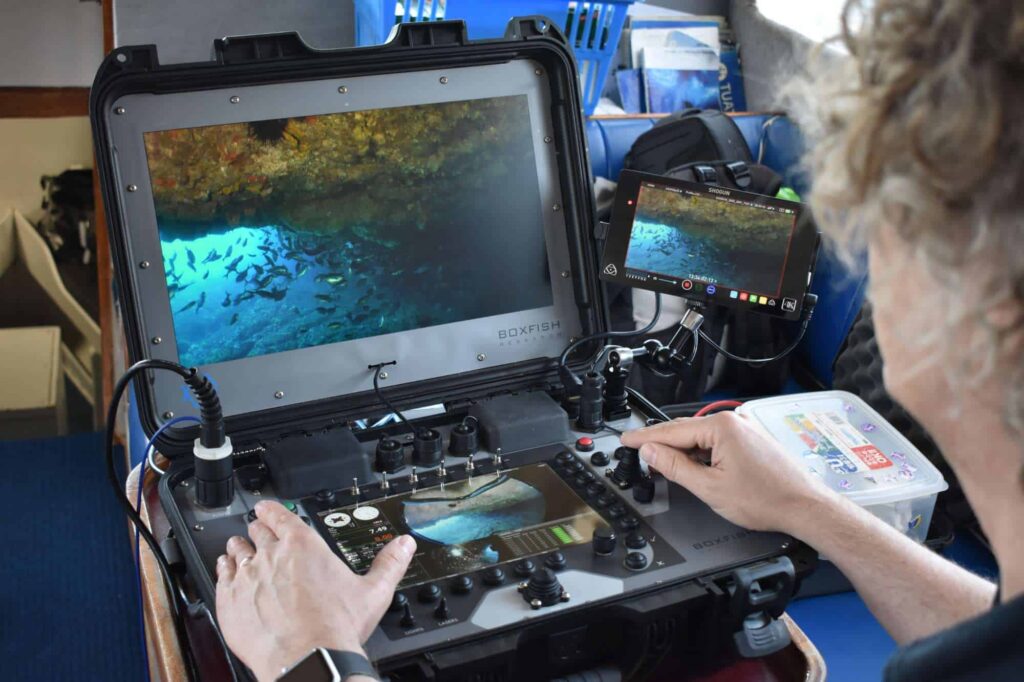
Boxfish Control Station provides underwater wireless communication with inspection ROV
Underwater Wireless Communications
Electromagnetic signals such as RF (radio-frequency) signals die off quickly in water, and thus it is impossible to achieve practical communications distances without a very high-power transmitter. This is not viable for UUV, and so wireless underwater communications use other technologies including acoustic, optical, and magnetic induction.
Acoustic Communications
Acoustic waves propagate very efficiently underwater and so are the basis for the most common form of subsea wireless communications for underwater vehicles. UUV and AUV can be equipped with acoustic modems to send and receive signals underwater. They also require electro-acoustic transducers that convert electrical energy from the vehicle into sound energy to be transmitted, or vice versa
While acoustic communications are currently the most viable form of underwater communications and can achieve practical range, they also have drawbacks. Acoustic communication links are subject to large propagation delays, due to the speed of sound in water being many thousands of times slower than the speed of EM waves in air, and also suffer from low bandwidth, limiting the amount of information that can be sent.
Optical Marine Communications
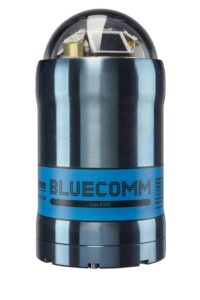
Sonardyne’s BlueComm Subsea Optical Communication System
Optical technologies for underwater communications have also been developed, typically using laser diodes or LEDs for LOS (line-of-sight) communication. Optical communication provides a much higher data rate and lower latency than acoustic communications, but range is limited. It can be used to allow UUV and AUV to recover data wirelessly from sensors that have been deployed underwater.
Magnetic Induction
Underwater magnetic induction communication, which uses magnetic coils to generate signals, has also been developed. While this method of communication features almost zero propagation delay, the range is highly limited.
ROV Communications
ROVs are usually communicated with via a tethered link to the surface. If communication is lost, some underwater robotics will automatically return to the surface. Tetherless ROV are currently in development.
Applications for Marine Communications
Marine and subsea communication systems are often used to communicate positioning information for tracking, mapping and inspection purposes. They can also be used to transfer video data and to control UUV. The use of intelligent nodes that sit on the seafloor and can communicate wirelessly with autonomous underwater vehicles opens up a wide range of subsea applications that may require high bandwidth, low latency, bi-directional, wireless communication links.
In order for subsea drones to carry out complex autonomous operations underwater, positioning data needs to be exchanged. As well as subsea mapping and inspection, secure, interoperable marine communication systems are vital in enabling unmanned underwater vessels to support mine countermeasures and anti-submarine operations.





